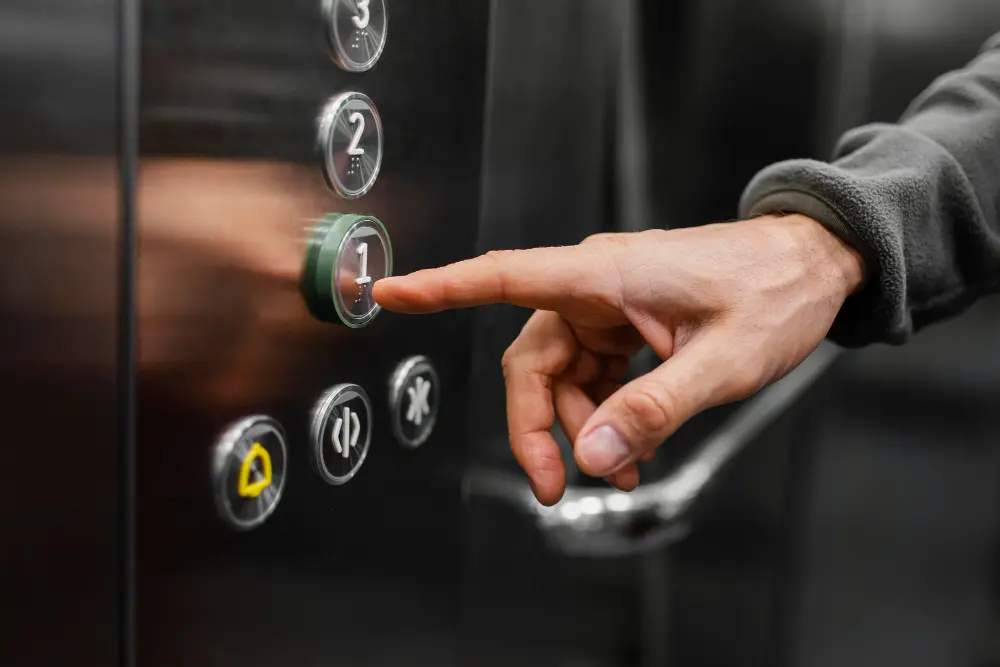Elevators are an essential part of modern infrastructure, providing convenient and efficient vertical transportation in buildings of all sizes. However, ensuring the safety of elevator users is paramount, and proper maintenance plays a crucial role in preventing accidents and ensuring smooth operation. In this blog, we’ll explore the importance of elevator safety, common causes of accidents, and how regular maintenance can mitigate risks and enhance safety for building occupants.
Understanding Elevator Safety
According to the U.S. Bureau of Labor Statistics, elevators cause an average of 30 deaths and 17,000 injuries each year in the United States alone. These accidents can have a significant impact on individuals, families, and businesses, highlighting the critical need for proper elevator safety measures.
Elevator safety encompasses various aspects, including mechanical functionality, electrical systems, emergency protocols, and user behavior. Regular inspections and adherence to maintenance schedules are foundational components of ensuring elevator safety and preventing accidents.
Common Causes of Elevator Accidents
Elevator accidents can occur due to mechanical failure, electrical malfunctions, user error, and a lack of proper maintenance. Mechanical issues such as door malfunction or sudden stops, electrical failures leading to entrapment, and user errors like forcing open elevator doors contribute to the occurrence of accidents. However, one of the most significant factors exacerbating these issues is the absence of routine maintenance and timely repairs.
The Role of Proper Maintenance
Proper maintenance is instrumental in preventing elevator accidents and ensuring the safety of passengers. The team at Boston Elevator Services emphasizes that letting professionals handle elevator maintenance is key to upholding the safety and reliability of elevator systems. By meticulously adhering to maintenance schedules and conducting thorough inspections, they ensure that elevators operate seamlessly and are free from potential hazards. Their proactive approach to identifying and rectifying mechanical and electrical issues plays a crucial role in mitigating the risk of accidents, fostering a secure environment for building occupants, and minimizing unexpected downtime. Through their expertise and dedication to comprehensive maintenance practices, elevator installation, inspection, and repair professionals exemplify the critical role of regular upkeep in elevating safety standards and instilling confidence in the functionality of elevator systems.
Case studies and real-life examples further emphasize the impact of proactive maintenance on elevator safety. Buildings that prioritize regular maintenance have reported fewer instances of unexpected downtime, reduced repair costs, and most importantly, a lower frequency of accidents or incidents related to elevator malfunction.
Best Practices for Elevator Maintenance
Establishing a comprehensive maintenance schedule is vital for the continued safety and reliability of elevators. Building owners and facility managers should work with qualified technicians and certified inspectors to conduct regular assessments and implement necessary repairs or upgrades. Adherence to safety regulations and industry standards is non-negotiable, ensuring that elevators meet all necessary compliance requirements for safe operation.
Additionally, proactive maintenance practices, such as lubrication of moving parts, testing of safety features, and monitoring of system performance, contribute to the overall longevity and safety of elevator systems. Building a partnership with a reputable elevator service provider can also streamline the maintenance process and ensure that all safety standards are met.
Collaborative Efforts for Elevator Safety
The responsibility for elevator safety extends beyond maintenance professionals to building owners, managers, and other stakeholders. Clear communication and collaboration between all involved parties are essential for establishing a culture of safety within buildings. Building owners should prioritize budget allocation for regular maintenance and repairs, while management teams should ensure that safety protocols are consistently enforced and followed.
Collaboration with elevator service providers is equally crucial, as it allows for comprehensive assessments, timely repairs, and access to expert guidance on safety best practices. This collaborative approach fosters a safer environment for building occupants and minimizes the risk of accidents related to elevator malfunctions.
Educating Users on Elevator Safety
In addition to proactive maintenance and collaborative efforts, educating building occupants on elevator safety is paramount. Training programs, informational materials, and awareness campaigns can help users understand safe elevator usage, emergency procedures, and the importance of reporting issues promptly.
Promoting a culture of safety within buildings encourages users to adhere to safety guidelines, report any irregularities, and take an active role in maintaining a safe environment for themselves and others. By empowering building occupants with knowledge and resources, the collective effort toward elevator safety is strengthened.

In conclusion, elevator safety is a multifaceted endeavor that requires proactive measures, collaboration, and ongoing education. Proper maintenance stands at the forefront of accident prevention, ensuring that elevators operate reliably and safely for the benefit of all users. Building owners, managers, maintenance professionals, and occupants must collectively prioritize safety to minimize the risk of accidents and create a secure environment within buildings. By investing in regular maintenance, adhering to safety standards, and promoting awareness, the goal of preventing elevator accidents and enhancing safety can be achieved.








